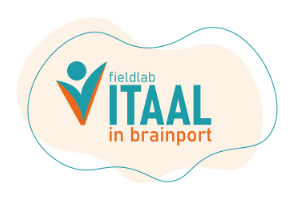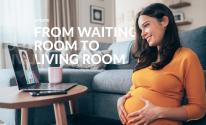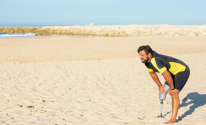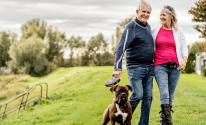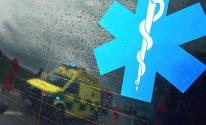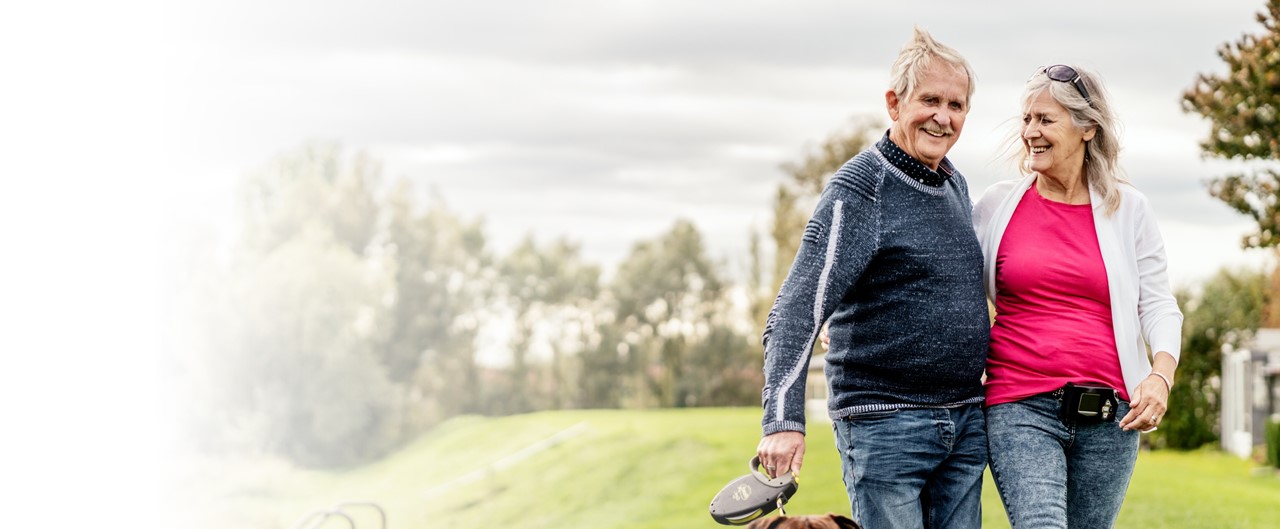
Chapter 2
Quadruple Helix
A collaborative network for and with citizens
Care in the living environment means taking care of ourselves and each other, supported by professionals where necessary. Formal and informal care then form an integral collaborative network using the talent of citizens, assisted where necessary and desirable by technology and/or therapy. This mission thus crucially relies on the interaction between citizens, government, industry and knowledge institutions. How do all these parties help in promoting care in the living environment?
The Right Care in the Right Place (De Juiste Zorg op de Juiste Plek)
The patient at the centre
INTERVIEW
With Adriaan Brouwer and Kees Ahaus
‘It has to be better, and it can be better for the patient’, says Adriaan Brouwer, Programme Manager de Juiste Zorg op de Juiste Plek. The Right Care in the Right Place movement arose from this realisation. Within this movement, professionals in the Netherlands are working together to make healthcare future-proof by focusing on the functioning of people. ‘We do this by working together within three pillars: 1) preventing (more expensive) care, 2) moving care and organising it around people and 3) replacing care with smart care and deploying eHealth. These three pillars go hand-in-hand and guide the major transition within health and care.’

Double-sided blade
The Right Care in the Right Place supports this transition in various ways, explains Brouwer. For example, ‘Regiobeeld provides insight into current and future demand for care. By making an overview of data available on healthcare supply and demand, for example, collaborating parties in the region can draw up a joint vision for the future.’ Kees Ahaus, Chair Knowledge Platform de Juiste Zorg op de Juiste Plek: ‘A knowledge platform has also been set up, for example,
in which experts from practice, policy and science work closely together.
The gaps in knowledge in the field of Right Care in the Right Place are itemised and classified in lines of action such as implementation, how the collaboration is organised, the citizen’s perspective on Right Care in the Right Place, and effectiveness research. The knowledge agenda is updated annually.’ The close collaboration with people from practice and the region ensures that the knife cuts both ways: parties in the region receive support in overcoming these challenges, and the Ministry of Health, Welfare and Sport can use the knowledge gained to develop policy.
Flywheel
‘The programme seems to be a flywheel for new initiatives that share the same goal and philosophy’, says Ahaus proudly. ‘More than 160 examples are already online that continue to feed the network with new knowledge and expertise. And that is only part of what is going on in the country with Correct Care in the Right Place; it is a real movement.’ For example, the Slingeland Hospital has designed an app that allows COPD patients to measure their values at home, and that means they need to visit the hospital less often.
By offering transmural care, an interdisciplinary approach and an integrated care plan, the TRANSIT project is working towards its goal: allowing children and families with a chronic physical condition to grow up as normally as possible, with an eye for all areas of life. Gelderse Vallei Hospital provides part of the chemotherapy at the patient’s home. This way, patients can stay in their own environment, and the nurse can give one-on-one attention. The parties in these initiatives work and think differently, so that they can ultimately deliver the right care in the right place.

New way of thinking and working
But the Right Care in the Right Place itself has also adopted a different way of thinking and working. Ahaus explains: ‘Within the movement, professionals in the Netherlands learn from each other by looking at practice. Not only at successful programmes but also at programmes that are not successful or have not been implemented.’ Brouwer adds: ‘Another unique aspect is that the National Institute for Public Health and the Environment (RIVM) carries out a continuous learning evaluation. We explicitly look at both the practical and policy side of the movement, because only together can we achieve results.’
A different way of
thinking and working
How can you join this movement?
‘By doing it, by doing it together!’ says Brewer. ‘Would you like to be brought into contact with relevant parties in your region? Contact us through our website and join our community on LinkedIn.
Do you have further questions, or do you want advice on a problem? We provide tailor-made advice at Care for Innovation (Zorg voor Innoveren).’
The first integrated fully closed-loop bi-hormonal artificial pancreas
Enjoying life without restrictions
Inreda Diabetic focuses on improving the lives of people with Type 1 diabetes. Founded by Robin Koops, a Type 1 diabetes patient, more than 15 years ago, Inreda Diabetic has developed the first integrated fully closed-loop bi-hormonal artificial pancreas.
The bi-hormonal AP operates fully autonomously, without the need to enter carb values and calculating insulin doses. The system can infuse either insulin to lower the blood glucose level or infuse glucagon to raise it. This means patients don’t have to constantly manage their diabetes, giving them the freedom to enjoy life without restrictions.

"Vitaal in Brainport"
A movement towards a vital region
Since 2020, Health˜Holland has been working intensively with a number of regions to realise the Health & Care missions. These regions are called “GROZzerdammen”. Citizens, but also municipalities, care and welfare institutions, knowledge and educational institutions, health insurers, employers and entrepreneurs together form a regional coalition within a GROZzerdam. The Brainport region is tackling the health and care challenges under the name “Vitaal in Brainport”.
From neighbourhood experiment to “Vitaal in Brainport”
Health˜Holland has invited the Brainport region to become a GROZzerdam based on a successful neighbourhood experiment in the district Achtse Barrier in Eindhoven. Over the past eight years, citizens, local professionals from care and welfare, and various regional organisations have worked together in an innovative way to create a vital neighbourhood with healthier residents. This was done through initiatives such as a digital ‘Neighbourhood Square’ that gives an overview of all the neighbourhood activities, a (digital) vitality market, numerous activities for the elderly, vulnerable people and youth, and an effect measurement with a social business case.
Based on the experiences in the Achtse Barrier, “Vitaal in Brainport” was formed. The “Vitaal in Brainport” movement has already had the official status of GROZzerdam for six months. Now it is also the first in the Netherlands to receive funding from the Ministry of Health, Welfare and Sport (VWS) to realise the missions. Together with co-financing from the municipalities of Eindhoven and Son en Breugel, the movement can start now.

Supporting entrepreneurs: turning ideas into reality
Through various programmes, Health~Holland supports entrepreneurs who want to contribute to a healthier world with their innovative ideas. But what does that healthier world look like? Anyone who needs care in 2030 will only go to an intramural institution if there is no other option. The focus lies on enabling citizens to participate fully and healthily in their own living environment. But, of course, everyone who is ill or has mental health problems would like to receive the best care. Read here how Moovd and Cory.Care are taking on this challenging mission.
